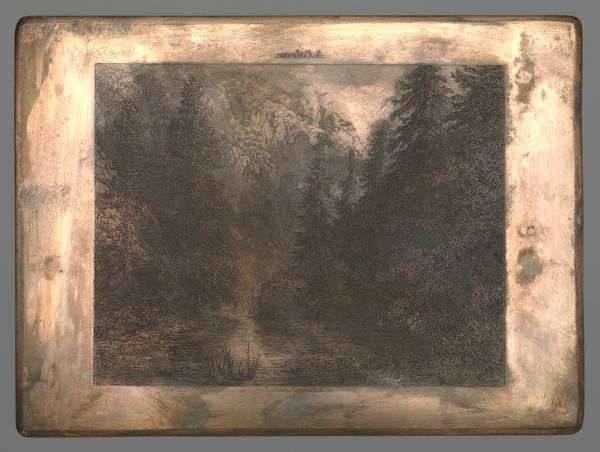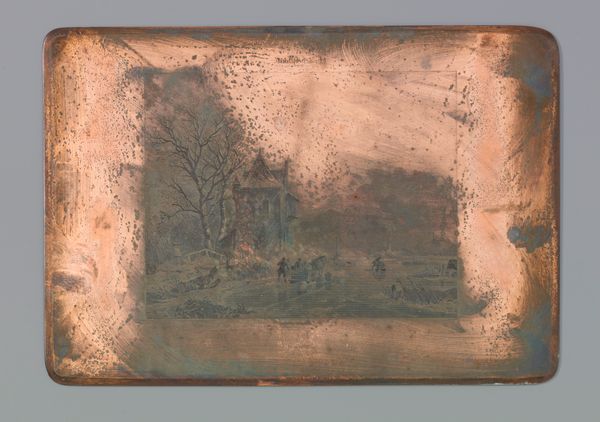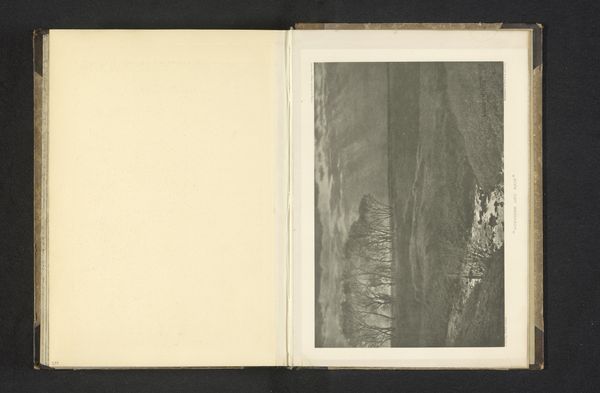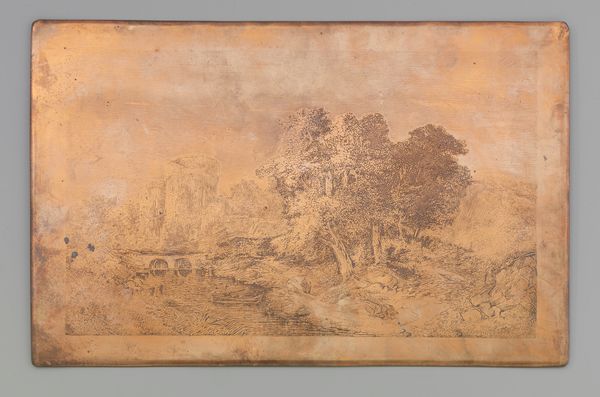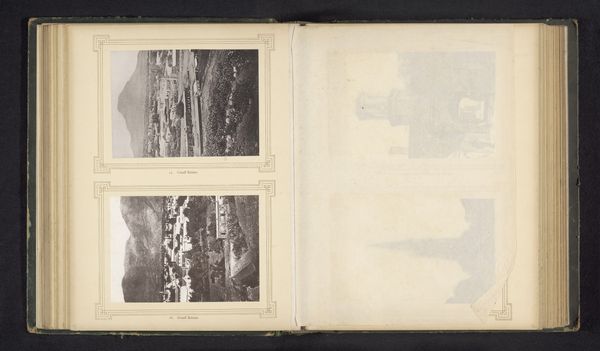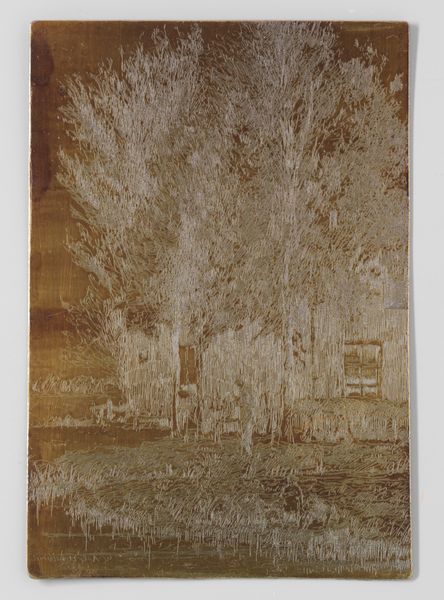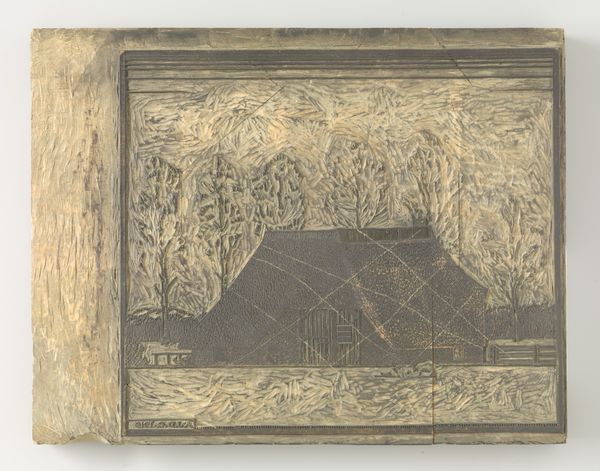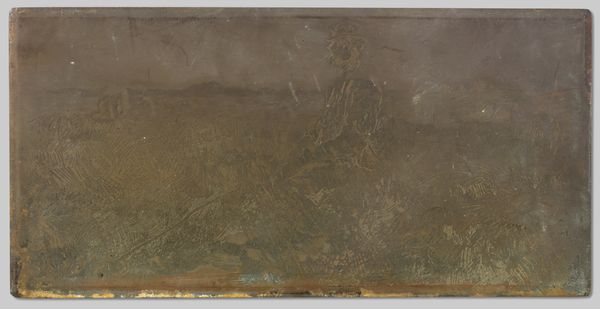
Landschap, waarin een vrouw, kind en hond als stoffage, uitgevoerd in gele was op zwart gelakt paneel 1766
0:00
0:00
Dimensions: height 46.8 cm, width 40.9 cm, depth 4.7 cm
Copyright: Rijks Museum: Open Domain
Editor: Here we have "Landscape, in which a woman, child and dog appear as staffage, executed in yellow wax on black lacquered panel", made in 1766 by J. van Straten. It’s a very interesting combination of sculpture and painting, almost ghostly in its monochromatic palette. How do you interpret this work through its formal qualities? Curator: The tension between the flatness of the black lacquered panel and the high relief of the wax figures immediately strikes the eye. This creates a dialogue between two- and three-dimensional space, which in turn disrupts traditional notions of perspective and representation. The monochromatic color scheme, primarily yellow wax against black, further enhances this effect, abstracting the forms and directing the viewer's attention to the texture and structure of the work. The artist intentionally employs a limited range to force a focus on form. Editor: So the lack of color contributes to its unique, almost surreal effect. How does the use of wax, as opposed to more conventional sculptural materials like marble or bronze, affect your reading of the piece? Curator: Wax, unlike marble, is inherently ephemeral, possessing qualities of fragility and malleability. This fragility subtly introduces a sense of temporality and impermanence, undercutting the grand, heroic narratives often associated with baroque art. We could then consider the artist's intended use of form and materiality in an engagement with notions of "high" and "low" art. Editor: I see. It’s almost as if the artist is commenting on the fleeting nature of life itself through the choice of such a delicate medium. Curator: Precisely. By using such non-conventional material for that period, Van Straten encourages us to consider not only the depicted subject matter – a pastoral scene – but also the very means of its construction and the implications thereof. Editor: Thank you. That definitely provides a fresh perspective on the piece's construction and meaning! Curator: Indeed, considering materiality can greatly enhance how we interpret and appreciate any work of art.
Comments
No comments
Be the first to comment and join the conversation on the ultimate creative platform.
